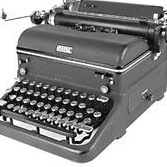Anyone have code for Si570 Synth chip
 PropGuy2
Posts: 365
PropGuy2
Posts: 365
in Propeller 1
I recently purchased a few Silicon Labs Si570 Programmable Oscillators / Frequency Synthesizer ICs. There are a few old posts on this Forum for this chip, but was wondering if anyone had done any recent code snippets / apps, that they are willing to share, for using this IC. If there are none out there I will work thru the math and post the results. Thanks ahead of time.


Comments
https://www.silabs.com/community/timing/forum.topic.html/si570_does_not_compl-wBcL
Apparently, the Si570 registers move about, depending on the ppm of the part. Most would not expect that
A : 50 ppm temperature stability, 61.5 ppm total stability => Configuration Registers 7-12
B : 20 ppm temperature stability, 31.5 ppm total stability => Configuration Registers 7-12
C : 7 ppm temperature stability, 20 ppm total stability => Configuration Registers 13-18"
That code is here I think
https://forums.parallax.com/discussion/163409/silabs-si5351-clock-generator-spin-driver
They are broadly similar, just different register sizes/location, but they all have Xtal Divider / VCO divider etc and so
Si5351 code should be better than starting from scratch.
Do you mind sharing your solution for 64-bit math? It could prove valuable to others.
Cheers,
Jesse
Hehe, I get that impression with many of the SiLabs synth parts. They mainly target fixed freq uses, and do not document that well.
( They did have a si504 that I liked, which simply swallowed a 32b Float number for frequency. Sadly, that went EOL, I suspect from some patent squabble.)
Here is a table I did of Silabs prog oscs. Generally the higher the Xtal & VCO, the better the jitter. From there, the newer Si514 is appx equal to the Si570 in jitter, but with better CMOS MHz range and lower Icc. Si570 goes higher in MHz, in LVDS modes.
The 514CCC000926AAG Oscillator XO 5MHz ±30ppm CMOS 3.3V 6-Pin SMD Tray looks to be lining up nicely with Prop1, powers up at 5MHz.
Stocked at Digi-Key Arrow Mouser Verical from $9.59/1+
Cheapest showing is 514CBC001037BAG 24.576MHz 3.3V $6.79/1+, due June, but this needs non-pll mode until i2c changes.
A possible stocked P1 Si570 could be
570BCC000112DG 10.0000MHZ LVDS $15.63/1 3.3V ±7ppm -40°C ~ 85°C 108mA, shows powers up as LVDS, but 10MHz is low, so a medium RL could probably drive in p1
Here's the register dump just for fun:
and why not the RV-3028 since I mentioned it:
Impressive what TQAOZ can do in one line...
I find this in my notes, for pre-programmed Si5351A choices.
Si5351A-B04486-GT Crystal Frequency (MHz): 25.000000000 Internal Load Capacitance (pF): 10 Default I2C address: 0x62
Output Clock Configuration:
CLK0 (MHz): 49.152000000 from PLLA
CLK1 (MHz): 24.000000000 from PLLB
CLK2 (MHz): 45.158400000 from PLLB
That Si5351A-B04486-GT seems well stocked in Digikey/Mouser, and would start-up with some known MHz on the CLK pins, before any i2c programming occurs.
At the more useful GPS TCXO drive of 26MHz, those numbers would be 4.00% higher
Thinking about that a bit more, I could load these on as the default P2 clock on all these boards rather than rely on the direct 25MHz crystal which then ends up on the Si5351 instead. Then we just specify the default P2 clock source as 49.152MHz
Nuff said for now as I see I'm going a little OT.
Simple unsigned 32/64-bit maths functions are "simple" enough really and even Tachyon has mixed modes built-in on the P1.
Of course. It depends on your final uses, which is best. What do you intend to use this for ?
In the table I pasted above, the VCO GHz gives a good indication of the Jitter/spurs to be expected.
The Si514 looks newer and is broadly similar to the older Si570 - did you look at that, to see if a Si514 version is much different in code ?
Even better is that the Si5351A can operate on a cheap (VC)TCXO, like this 26c/100 model, where the GPS volumes result in quite low prices.